Kingdom Animalia Scientific name Endopterygota | Phylum Arthropoda Higher classification Eumetabola | |
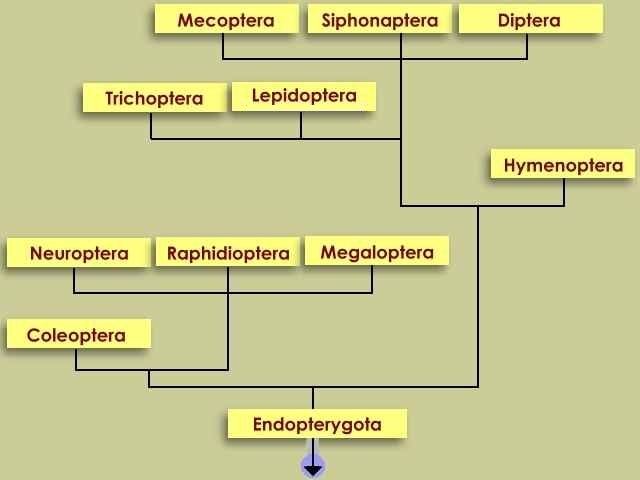 | ||
Lower classifications Butterflies and moths, Fly, Hymenopterans, Butterfly, Ant | ||
Endopterygota, also known as Holometabola, is a superorder of insects within the infraclass Neoptera that go through distinctive larval, pupal, and adult stages. They undergo a radical metamorphosis, with the larval and adult stages differing considerably in their structure and behaviour. This is called holometabolism, or complete metamorphism.
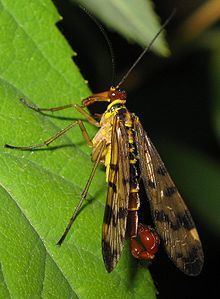
The Endopterygota are among the most diverse insect superorders, with about 850,000 living species divided between 11 orders, containing insects such as butterflies, flies, fleas, bees, ants, and beetles.

They are distinguished from the Exopterygota (or Hemipterodea) by the way in which their wings develop. Endopterygota (meaning literally "internal winged forms") develop wings inside the body and undergo an elaborate metamorphosis involving a pupal stage. Exopterygota ("external winged forms") develop wings on the outside of their bodies and do not go through a pupal stage. The latter trait is plesiomorphic, however, and not exclusively found in the exopterygotes, but also in groups such as Odonata (dragonflies and damselflies), which are not Neoptera, but more basal among insects.
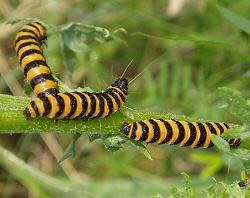
The earliest endopterygote fossils date from the Carboniferous.
Systematics
ITIS considers any subdivision of the Neoptera beyond the orders invalid, but this is almost universally rejected.
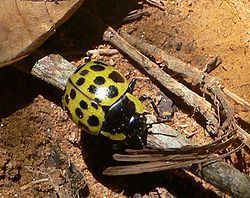
The Endopterygota are sometimes divided into three assemblages: Neuropteroida (Neuroptera, Megaloptera, Raphidioptera, and Coleoptera), Hymenopteroida (Hymenoptera), and Panorpoida (Siphonaptera, Diptera, Trichoptera, Lepidoptera, Strepsiptera, and Mecoptera). The hymenopterans, with their highly developed social systems, were believed to have constituted the most advanced insects, despite their rather "primitive" anatomy compared to flies and beetles, for example.
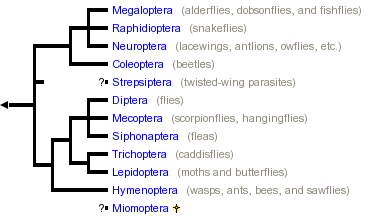
More recently, this has increasingly been rejected and DNA sequence data seem to verify that the hymenopterans are indeed among the most basal endopterygotes, whereas flies and fleas are often considered the most radically advanced insects. This calls the previous subdivision into question, and consequently several new taxa have been proposed, splitting up the Endopterygota. While some groups (such as the "sucking-stinging" fly-flea assemblage or the caddisfly-butterfly group) seem indeed to be good clades, it is not likely that the relationships of the endopterygotes, or the neopteran insects in general, will be resolved in detail soon.
Superorder Endopterygota sensu stricto
Proposed superorder Coleopterida
Proposed superorder Neuropterida/Neuropteroidea
Proposed superorder Mecopteroidea/Antliophora
Proposed superorder Amphiesmenoptera
Incertae sedis
